This article was co-authored by Jonathan Frank, MD. Dr. Jonathan Frank is an Orthopedic Surgeon based in Beverly Hills, California, specializing in sports medicine and joint preservation. Dr. Frank's practice focuses on minimally invasive, arthroscopic surgery of the knee, shoulder, hip, and elbow. Dr. Frank holds an MD from the University of California, Los Angeles School of Medicine. He completed an orthopedic residency at Rush University Medical Center in Chicago and a fellowship in Orthopedic Sports Medicine and Hip Preservation at the Steadman Clinic in Vail, Colorado. He is a staff team physician for the US Ski and Snowboard Team. Dr. Frank is currently a scientific reviewer for top peer-reviewed scientific journals, and his research has been presented at regional, national, and international orthopedic conferences, winning several awards including the prestigious Mark Coventry and William A Grana awards.
There are 9 references cited in this article, which can be found at the bottom of the page.
This article has been viewed 45,634 times.
A fractured or broken bone is always considered a traumatic injury, but not all are classified as serious — there are different types based on severity. A hairline or stress fracture of bone is the least traumatic and doesn't result in misaligned pieces. Fractures that result in pieces that are misaligned, particularly if they poke through the skin, are much more serious and sometimes life threatening. Consequently, realigning a broken bone in a timely manner is crucial, but not a procedure that should be attempted by someone untrained. Fracture realignment should be performed by a surgeon or physician ideally, although other health professionals and first responders may have to suffice in some emergency situations.
Steps
Preparing for Bone Realignment
-
1Assess the injury. In an emergency situation, with no trained medical personnel around, it's important to be able to identify a fractured bone. Fractures typically occur with significant trauma (hard fall or car accident) and the person almost always feels severe pain — they may also report hearing or feeling a cracking sensation. Fractures to the head, spine or pelvis are difficult to ascertain without x-rays, and are injuries that require a person not be moved, realigned, or transported. However, long bones such as the arms, legs, fingers and toes will look crooked, misshapen, deformed or obviously out of place.[1] Once you've identified a suspected fracture, it's best to call for an ambulance and get professional medical help instead of attempting to realign any bones yourself — you may actually cause greater injury despite your good intentions.
- Other common signs and symptoms of a broken bone include: limited mobility, numbness or tingling, severe swelling and bruising, nausea.
- Trying to move a person with a fractured spine or skull is very risky without proper training and should be avoided.
- Attempting to align broken bones improperly can lead to further damage to blood vessels and nerves, leading to more bleeding and potential paralysis.
-
2Calm the person down. The first thing you should do when dealing with a person with an obviously broken bone is calm her down, because if she starts to really panic and go into shock, then her body processes start to shut down. As such, reassure the person, calm her down, explain she is injured but that she will be okay, and then let her know help is on the way (or they are already in good hands). This advice applies to medical personnel and any untrained person at the site of an accident.
- Have the person lie down with her head propped up and/or supported in the most comfortable manner possible. Make sure the person doesn't move her fractured bone to any significant extent.
- Do not allow a person with a spinal, head, neck, or pelvic injury to get up, and especially don't let her walk.
- To help prevent shock, cover the person in a blanket or jacket to keep her warm.
Advertisement -
3Ice the injury. Apply something cold, preferably ice, to the bone fracture as soon as you can. Cold therapy has a multitude of benefits including numbing the pain, reducing the inflammation and slowing down bleeding via vasoconstriction (narrowing or tightening of localized arteries).[2] Alternatives to ice include frozen gel packs and bags of veggies from the freezer, but make sure to wrap anything cold in a thin towel before you apply it to skin in order to avoid ice burn or frostbite.[3]
- Apply the cold therapy for at least 15 minutes or until the area is completely numb before attempting to reset or realign the fractured bone.
- While the cold therapy is being applied, make sure the broken limb is very carefully elevated in order to combat inflammation and slow down any blood loss.[4] However, broken legs should never be elevated. Do not risk harming the broken limb in order to elevate it.
- To further combat swelling and blood loss, compress the cold therapy against the injury with a bandage, elastic support or even a belt. However, don't tie the compression bandage too tight or leave it on for more than 15 minutes because complete restriction of blood flow could cause more damage to the injured area.
-
4Control the pain with medication. Before realigning a fractured bone, you need to consider pain control, otherwise the patient may lose consciousness or go further into shock. Within hospital settings, patients with fractured bones are usually given strong prescription (opioid-based) medication before any sort of realignment procedure. However, in an emergency setting, cold therapy and over-the-counter drugs are likely all that can be hoped for. Acetaminophen (Tylenol) is a pain killer most appropriate if there is significant bleeding associated with the fracture because it doesn't "thin" the blood.[5]
- Non-steroidal anti-inflammatories (NSAIDs) such as aspirin and ibuprofen are effective for pain and inflammation control, but they also inhibit blood clotting, so they aren't a good idea for injuries involving significant bleeding. Even if there is no bleeding, an NSAID should not be given until at least 30 minutes after the injury, which allows damaged tissues time to begin to repair themselves.
- Furthermore, aspirin and ibuprofen should not be given to young children, regardless whether there's much bleeding associated with the fracture or not.
Realigning a Fractured Bone
-
1Wait for qualified medical personnel if possible. Due to the advance of communication technology and widespread availability and usage of cellular (mobile) phones, emergency situations that occur in isolated locations needn't always unfold without trained medical people present. Nowadays, with vast cellphone network coverage, your first thought in an emergency situation should be to call for help (such as 9-1-1) before attempting to offer first-aid or medical attention, such as aligning a fractured bone.[6]
- Although an emergency call can be made quickly (within minutes), if you are located in an isolated spot, help may not arrive for up to an hour or more. It may be necessary to do some basic first aid to move the person to safety.
- If you really don't think you can realign a broken bone by yourself, then focus more on CPR (clearing the airways and making sure the person can breathe) and controlling the bleeding, if any.
-
2Realign the bone with closed reduction. Realigning a fractured bone is necessary because it reduces pain, supports healing, can reduce internal bleeding, prevents further complications, and restores normal function and use of the injured bone. If the fractured bone is considered relatively stable and does not obviously require surgery, then closed reduction can be performed. Closed reduction involves stabilizing above and below the fracture site and gently applying traction to the most distal piece (furthest from the heart) in the general direction that it's facing. While maintaining traction (pulling pressure), gently move the most distal piece back towards its anatomical position such that the fractured bone looks straight. Closed reduction realigns bones without breaking through the skin.[7]
- Traction can be applied with your own hands and upper body strength, or with the help of weights and pulleys if in a clinical setting.
- Without medical training, only fingers and toes should be attempted to be realigned with traction if it's not possible to get medical help right away. Other bones / areas present too much risk of further injury for the untrained.
- Stop realigning the bone if there is considerable resistance or a significant increase in pain.
- Muscle relaxant medication may help the realigning procedure, especially if the surrounding muscles have gone into spasm.
-
3Have a surgeon realign the bone with open reduction. The open reduction method involves surgically cutting into the skin and other soft tissues to access the fracture site and put the bone fragments back together. Open reduction is done only by an orthopedic surgeon and only if closed reduction with traction is unsuccessful or not possible. As such, open reduction is typically used for the most serious types of fractures when the bones are in multiple fragments (called a complicated comminuted fracture), which often occurs when bones are badly crushed. The orthopedic surgeon has a choice of two types of open reduction surgery: internal fixation or external fixation.[8]
- Internal fixation uses special metal screws, rods and/or plates to attach the bone fragments together and hold everything in place until the injury heals. With this approach, the hardware often remains in place under the skin even after the fracture heals.
- External fixation holds the bone in place as it heals with a supportive external frame (on the outside of the skin) made of rods that are drilled into the bone pieces with metal screws.[9] The frame is then removed once the bone is healed and strong enough to support itself. This technique is used for complex fractures that cannot be repaired using open reduction or surgical internal fixation.
- Any type of bone repair surgery requires a regional or general anesthetic for pain control.
-
4Cast or splint the bone for best alignment. After a successful closed reduction procedure involving traction, a plaster (or fiberglass) cast or metal splint is typically used to keep the fractured bone in place. Casting or splinting a stabilized fracture is usually the most effective way of attaining a well-aligned bone. Casts and splints also provide protection from further trauma and prevent careless movement via immobilization. Casting and splinting is not often done with open reduction methods, but may sometimes be used in conjunction with metal screws and plates, or after the supportive frame is removed with internal fixation.[10]
- Casts and splints are often left on for several weeks, depending on the severity of the fracture.
- Splinting can be done in an emergency situation outside of a hospital environment using a variety of materials including pieces of wood, metal, plastic or stiff cardboard.
- When splinting a fracture site, try to allow movement in the adjacent joints (unless the fracture involves the joint) and don't secure the material too tight — allow appropriate blood circulation.
Warning
- Aligning fractured bones is best left to trained professionals and should only be attempted on smaller peripheral bones by untrained people in extreme and rare emergencies.
References
- ↑ https://www.pennmedicine.org/for-patients-and-visitors/patient-information/conditions-treated-a-to-z/bone-fractures
- ↑ https://www.mayoclinic.org/first-aid/first-aid-fractures/basics/art-20056641
- ↑ Jonathan Frank, MD. Sports Orthopedic Surgeon & Joint Preservation Specialist. Expert Interview. 31 July 2020.
- ↑ Jonathan Frank, MD. Sports Orthopedic Surgeon & Joint Preservation Specialist. Expert Interview. 31 July 2020.
- ↑ https://mydoctor.kaiserpermanente.org/ncal/provider/ggayre/resources/dc/article?article=article_191550.xml
- ↑ https://www.nlm.nih.gov/medlineplus/ency/article/000001.htm
- ↑ https://medlineplus.gov/ency/patientinstructions/000521.htm
- ↑ https://orthoinfo.aaos.org/en/diseases--conditions/fractures-broken-bones/
- ↑ https://www.nlm.nih.gov/medlineplus/ency/presentations/100077_2.htm


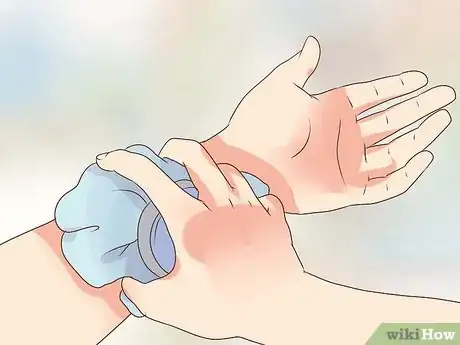


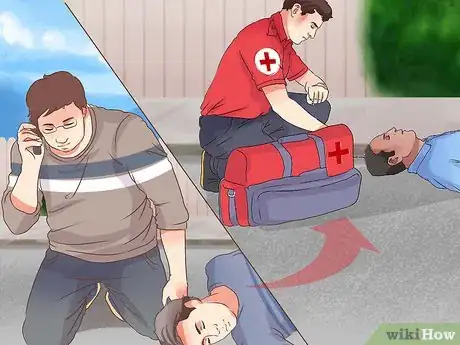
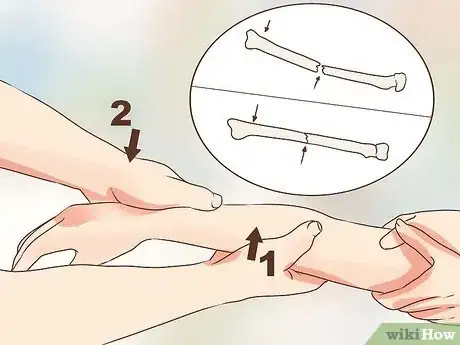
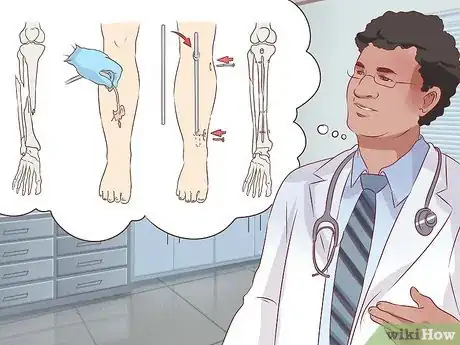






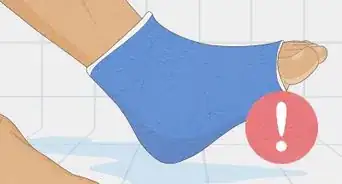

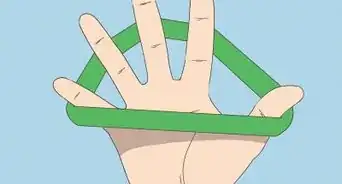

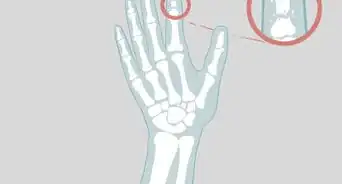
















































Medical Disclaimer
The content of this article is not intended to be a substitute for professional medical advice, examination, diagnosis, or treatment. You should always contact your doctor or other qualified healthcare professional before starting, changing, or stopping any kind of health treatment.
Read More...